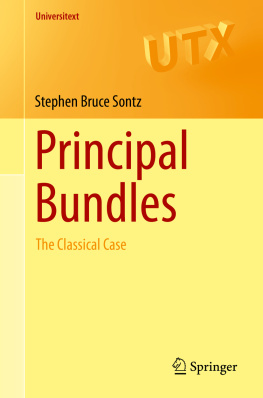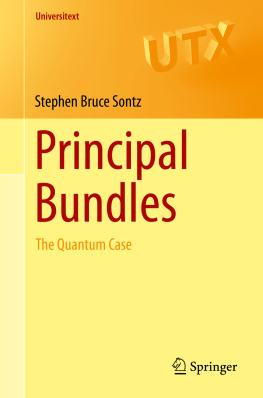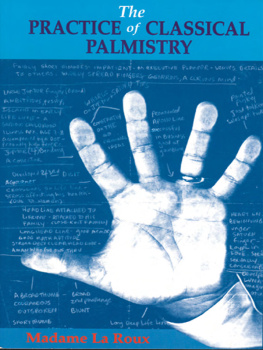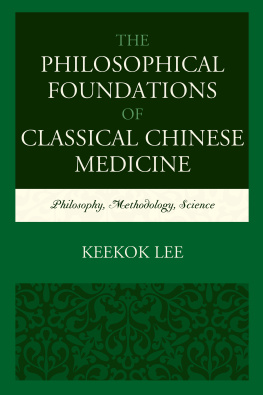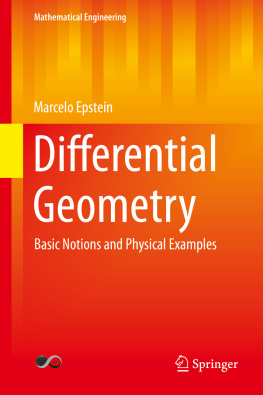Sontz - Principal Bundles: the Classical Case
Here you can read online Sontz - Principal Bundles: the Classical Case full text of the book (entire story) in english for free. Download pdf and epub, get meaning, cover and reviews about this ebook. City: Cham, year: 2015, publisher: Springer International Publishing, genre: Home and family. Description of the work, (preface) as well as reviews are available. Best literature library LitArk.com created for fans of good reading and offers a wide selection of genres:
Romance novel
Science fiction
Adventure
Detective
Science
History
Home and family
Prose
Art
Politics
Computer
Non-fiction
Religion
Business
Children
Humor
Choose a favorite category and find really read worthwhile books. Enjoy immersion in the world of imagination, feel the emotions of the characters or learn something new for yourself, make an fascinating discovery.
- Book:Principal Bundles: the Classical Case
- Author:
- Publisher:Springer International Publishing
- Genre:
- Year:2015
- City:Cham
- Rating:3 / 5
- Favourites:Add to favourites
- Your mark:
- 60
- 1
- 2
- 3
- 4
- 5
Principal Bundles: the Classical Case: summary, description and annotation
We offer to read an annotation, description, summary or preface (depends on what the author of the book "Principal Bundles: the Classical Case" wrote himself). If you haven't found the necessary information about the book — write in the comments, we will try to find it.
Sontz: author's other books
Who wrote Principal Bundles: the Classical Case? Find out the surname, the name of the author of the book and a list of all author's works by series.
Principal Bundles: the Classical Case — read online for free the complete book (whole text) full work
Below is the text of the book, divided by pages. System saving the place of the last page read, allows you to conveniently read the book "Principal Bundles: the Classical Case" online for free, without having to search again every time where you left off. Put a bookmark, and you can go to the page where you finished reading at any time.
Font size:
Interval:
Bookmark:
- Avoidance of explicit coordinates
- This is a point of view advocated by Lang in []. We prefer to put the emphasis on what the coordinate functions really represent, namely, charts that are homeomorphisms onto open sets in a model space. This also eliminates an inundation of indices and so results in formulas that are much easier to understand. However, when we feel that a coordinate-free presentation is too cumbersome, we will use local coordinates.
- The use of diagrams in lieu of formulas
- This may seem to contradict the previous point but is meant to complement it. The point is that every formula can be expressed in words, but it is much preferable to use a formula and, among all possible formulas, the clearest of them all. (This is a sort of optimization problem whose study should be taken seriously!) But often the clearest formula can be rewritten as an even clearer diagram. And so we propose to do just that. An example of this is our definition of an Ehresmann connection, where we present the usual formulas but also their equivalent diagrams, which we find to be more transparent.
- The definition of differential forms
- We use a definition that explicitly displays 1-forms as dual maps (with values in the real line) to vector fields. Consequently, vector-valued differential forms are defined as maps with the same domains but with values in a given vector space.
- The affine operation
- We present the affine operation (also known as the translation function) as a basic structure defined on every Lie group G as well as on the fibers of every principal bundle with structure group G .
- Early use of cocycles
- We introduce at an early stage the concept of cocycle as the structure behind the construction of the tangent bundle and consequently in the definitions of vector bundle and principal bundle.
- The importance of the fiber product
- This is a well-known construction, but for whatever reason, it does not seem to be very popular in introductions to the subject matter. We find it to be extremely useful in our definition of differential forms k -forms for k 2 and in the discussion of the affine operation.
- The MaurerCartan form as an Ehresmann connection
- The point here is that a seemingly trivial example of an Ehresmann connection gives us the definition of the MaurerCartan form of a Lie group. This leads to the natural problem of the classification of all Ehresmann connections on a Lie group considered as the total space of the principal bundle over a one-point space. This rather easy, yet rather important problem is rarely mentioned in introductory texts. But the answer illuminates the discussion of gauge fields and so deserves to be mentioned. In particular, proofs based on extended calculations are replaced by arguments based on the underlying structure of the theory, thereby revealing just why the calculations had to work out right.
- The use of categories
- We use category theory as an efficient language for describing many aspects of the theory. While this language is not absolutely necessary for understanding this book, this is a good time to learn it since it is essential language for the companion volume []. For reasons totally unclear to me, there still are some mathematicians who are allergic to this language and prefer to avoid it at any cost. As far as I am concerned, one might as well eliminate vector spaces as unnecessarily abstract constructs.
- One definition of smooth
- Paraphrasing Gertrude Stein, one of our maxims will be smooth is smooth is smooth. This means that we introduce one definition of a smooth manifold and one definition of a smooth map between smooth manifolds. While this seems to be a completely straightforward and uncontroversial application of the more general categorical imperative , it is too often violated in practice. For example, smooth distributions and smooth sections are sometimes given independent definitions as if they were not particular cases of the concept of a smooth map. We consider such an approach to be distracting, to say the least.
- Not all concepts are defined
- This might well be deemed heresy! Sometimes no definition is given at all since a lot of basic vocabulary is readily available in the 21st century on the Internet. Some terms that one would expect to be defined in 20th-century (or earlier) books are simply not defined. Just a few examples are linear, quotient space, and disjoint union.Of course, rigorous definitions are the essential first step of the basic logical process: definition, theorem, proof. However, the mathematical process begins with ideas, not definitions. Only then is the logical process followed. So some effort is made to explain clearly the ideas behind those definitions that are presented. But sometimes only an idea, even just a vague idea, is given and the definition, theorem, proof sequence is left as an exercise. This is part and parcel of the philosophy behind Feynmans maxim. This philosophy will be practiced in moderation. For example, it is used mostly in the discussion of results from category theory, which the reader need not dominate on a first reading. This will give the reader the opportunity to practice transforming ideas into rigorous definitions, which can then be used to prove theorems. The next step is to learn how to have ideas, but we leave that for another book.
- Tangent vectors are underemphasized
- If this had not been explicitly mentioned, the reader might never have noticed. Sure, the tangent vectors and tangent fields are here. So is the tangent bundle. But I deliberately only sketch the theory of vector fields and their integral curves, a standard topic! I am saying that these structures are not as central as they were once thought to be. (Heresy!) The important structures are their duals: cotangent vectors, 1-forms, and the cotangent bundle. But from our traditional, historically limited perspective, we do not understand how to grasp the dual structures directly as things in themselves. In this regard, we note that a generally accepted folklore of noncommutative spaces is that their correct infinitesimal structure is modeled in classical spaces by the de Rham theory, which is based on differential forms. In the companion volume [], there will be little mention of tangents and their analogs in the noncommutative setting.
Font size:
Interval:
Bookmark:
Similar books «Principal Bundles: the Classical Case»
Look at similar books to Principal Bundles: the Classical Case. We have selected literature similar in name and meaning in the hope of providing readers with more options to find new, interesting, not yet read works.
Discussion, reviews of the book Principal Bundles: the Classical Case and just readers' own opinions. Leave your comments, write what you think about the work, its meaning or the main characters. Specify what exactly you liked and what you didn't like, and why you think so.

